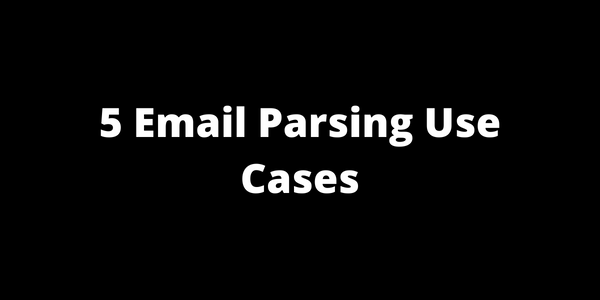What is an Email Parser? November 2022 · ian
What is an email parser?
An email parser is a piece of software that takes inbound emails, ingests the raw email data and then using rules can extract specific data points from the email. The output of that email parsing process is typically in the format of JSON (Javascript Object Notation), which is a standard that computers like to use to speak to each other.
Emails are obviously a very popular method of communication so being able to consistently parse the contents of an email provide some very significant benefits for their users. As software continues to grow in popularity, being able to automate data between software platforms using email is a very powerful tool. One of the appeals of email parsing platforms (like HostedHooks), is their support for no code. The ability to use an email parser that doesn’t require any coding knowledge, is incredibly valuable from both a time and cost savings perspective.
How does an email parser work?
Email parsers are software that take an input of raw email data and run it through a set of rules to try to extract specific data points. These rules can vary, but essentially they are coordinates that tell the software where to look for specific pieces of data. While emails can vary, as long as the rules are well written, they can use the coordinates within each email to consistently find the data that the rule is looking to extract.
Let’s run through some of the types of rules so you can get a better understanding of how these email parsers work.
Capture all after the match rule
This type of rule will look for specific of text within the email and once it finds it, it will parse everything after it. As long the keyword is consistently in the email content the email parser will be able to correct extract the data.
Capture all before the match rule
Similar to the rule above, this type of rule will look for specific text within the email and once it finds it, it will parse out everything before it.
Capture last X characters
This type of rule will take an input of a quantity (1,2,3,etc) and starting from the end of the email content will capture that number of characters.
These are just a few types of rules to showcase how an email parser works. These rules alone may not be enough to capture the data that you are looking for, and to solve for this you can chain them together to create multistep parsing rules. Do this rule and then this rule and then this rule, etc.
What are the benefits of an email parser?
There is an evergrowing list of benefits of an email parser and some specific to your business that you haven’t even discovered yet. Here are a couple general benefits of an email parser.
Cost Efficiency
Since an email parser is just a piece of software, the idea that you can write this software once and run it many times has tremendous cost efficiency benefits. This same principle can be applied to your email parsing. You can build rules to consistently parse an email and while that work is front loaded, once it is in place it will continue to automatically work with minimal input.
Also, with the popularity of no-code email parsers, this gives more people the ability to take advantage of that automation.
Email Parsing Automation
Another huge benefit is what you can do with the email data once it is parsed. As more and more companies start using software to run their businesses, they will need to use automation to connect the data between the different platforms. Before email parsing, sending email data to another platform was mostly a manual process. In the case where you have an email parser, you can now take that parsed email data and send it to other platforms automatically and keep everyone and every system up to date. The benefits here are tremendous.
What can I do with an email parser?
Once you’ve gone ahead and setup your parsing rules, and are consistently parsing your emails into JSON, there are tons of integrations you can make and the options are really endless. But here are some ideas.
You can take your email data, parse it and then input into a spreadsheet, like Google Sheets or Airtable, where your team can run an analysis on it.
Another might be taking your form website’s form data, receiving an email with the lead information , parsing it and then and sending it to your CRM.
Notifications is another popular use case. You can parse an email and when a certain condition is met, you can trigger a notification in slack.
There are just some ideas, but like we said, the opportunities are endless.
Conclusion
We hope this article has been informative and taught you about email parsers and why they are so valuable.
Try HostedHooks Free
Getting started is easy! No credit card required.


